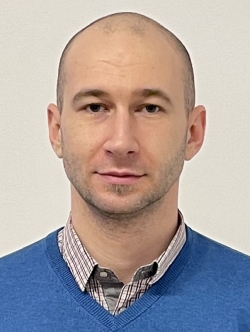The PhD defence and trial lecture will be held in Auditorium 1, The Geology Building. In some cases, it will be possible to attend the trial lecture and dissertation digitally, in that case a link to Zoom will be posted.
Trial lecture
Wednesday 25 May, 10:15, Aud 1, The Geology Building:
Recording elastic wavefields via multicomponent measurements, and their use in seismic processing
Conferral summary (in Norwegian)
Seismiske data brukes til å avbilde undergrunnen, men kan ikke brukes direkte. Disse dataene er aldri støyfrie og registreres ikke uniformt. Denne doktorgradsavhandlingen består av to hovedkomponenter. De første komponentene tar for seg støyproblemet i seismiske data fra marin tauing. Den andre komponenten prøver å løse problemet med manglende og uregelmessig samplede seismiske data ved hjelp av dyp læring.
Main research findings
Popular scientific article about Hlebnikov’s dissertation:
Deep learning as a tool for seismic data interpolation
During seismic acquisition, reflected waves from the subsurface are recorded by sensors in seismic cables in the water column. The measured data are used to create images of the subsurface to explore natural resources. Achieving good-quality images requires separating unwanted energy and interpolating missing data, which are essential in seismic data processing. Historically, a tailored physics-based workflow consisting of multiple procedures would be implemented. This is usually costly in terms of manpower and use of computing resources.
The doctoral thesis comprises two main components. The first component addresses the problem of noise in marine towed seismic data, where a detailed description of a wide range of marine noise types in towed streamer data is given. The work also includes some widely adopted techniques for attenuating noise and specific tricks applied in industrial de-noising. The second component tries to solve the problem of missing and irregularly sampled seismic data using deep learning. This work led to the development of deep learning approaches for interpolation of regularly and/or irregularly sampled data. The latest iteration of our deep learning algorithms now delivers better results compared to the state-of-the-art available conventional physics-based algorithms. Also, new insights to further develop the processing quality of the data-driven deep neural networks have been proposed.
Photo and other information:
Press photo: Volodya Valeriev Hlebnikov, portrait; 800px. Photo: Private
